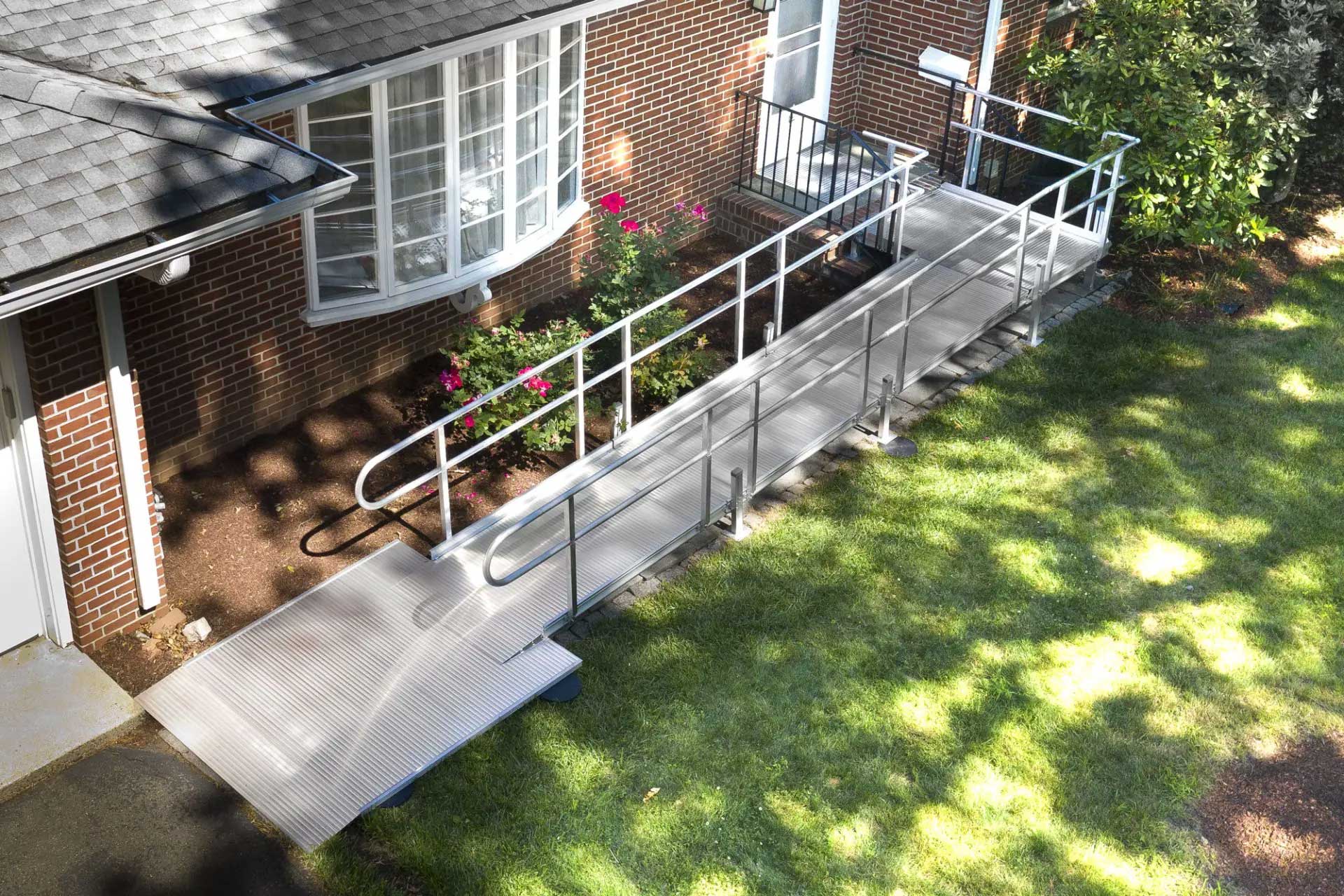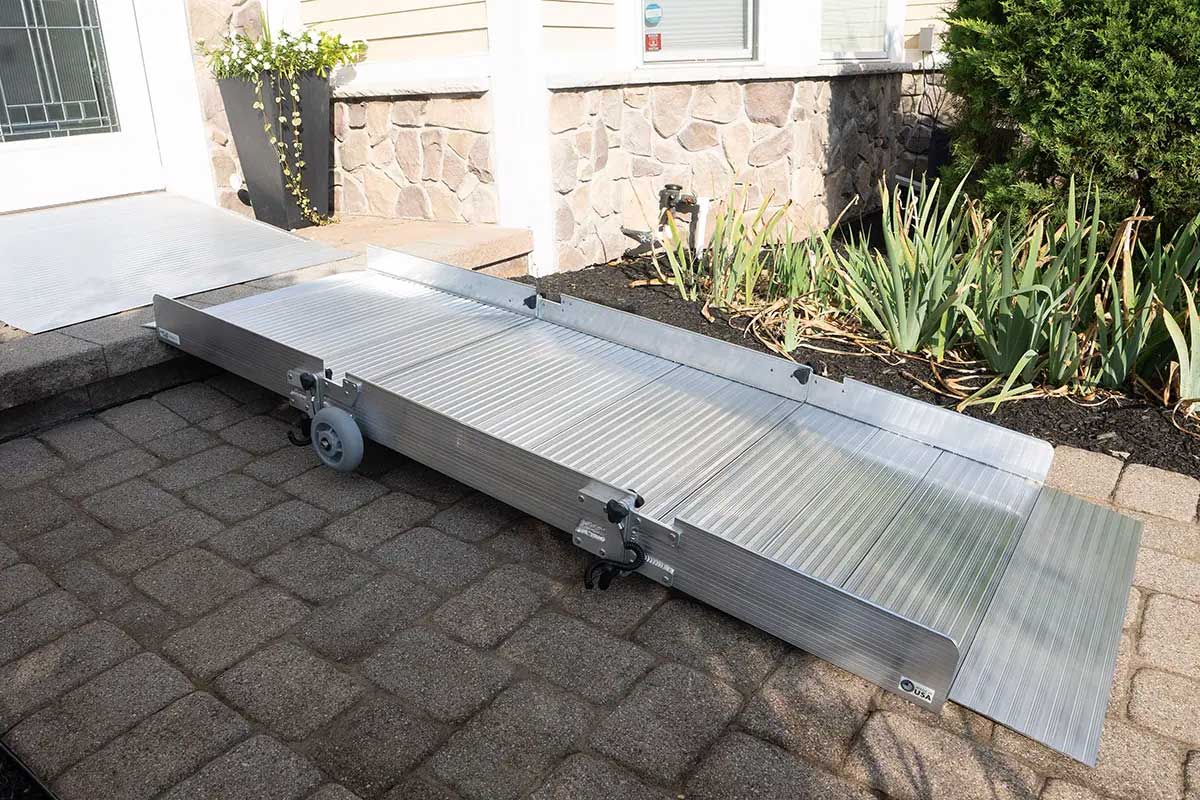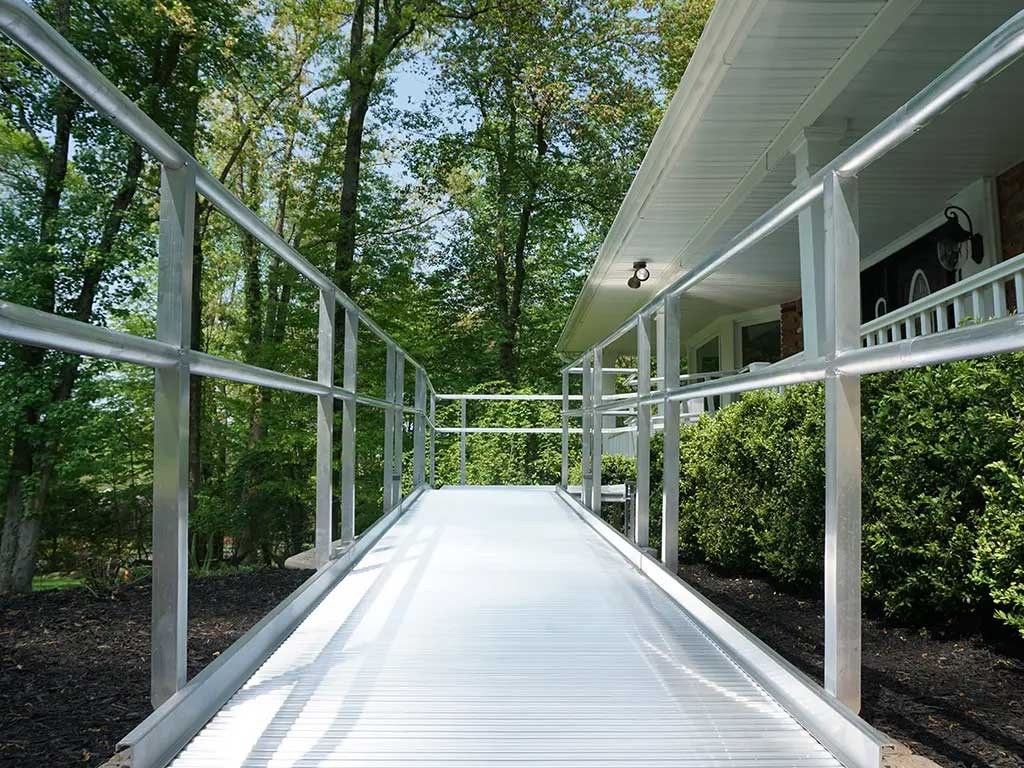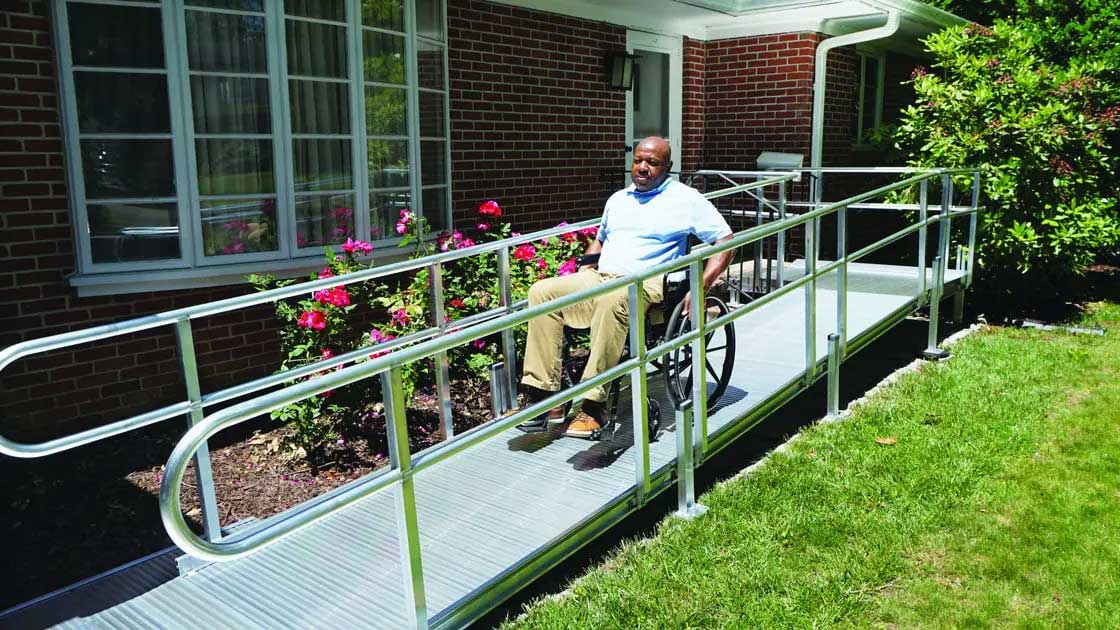
While home wheelchair ramps usually aren’t legally required to follow the standards in the Americans with Disabilities Act (ADA), adhering to ADA ramp guidelines is still the best way to get easy and safe wheelchair access to your home.
Local building codes may also require private ramps to follow certain safety standards, often based on ADA or state regulations. Prioritizing compliance from the start helps avoid installation mistakes and guarantees a safe, accessible home entrance.
Even with the best intentions, however, many homeowners risk running into problems when installing home access ramps. An incorrect slope, narrow width, lack of handrails, small or uneven landings, or missing edge protection, can make a ramp unsafe or difficult to use.
The good news is that most of these issues are easy to prevent once you know what to look for. Here’s a guide to the most common wheelchair ramp mistakes and how to fix them.
Slope and Rise Requirements
The ADA recommends a 1:12 slope ratio: for every 1 inch of vertical rise, the ramp should be at least 12 inches long. Steeper ramps can be tiring, unsafe, or unusable.
- Measure the rise: Determine the total vertical height from ground to entry point.
- Calculate the length: Multiply the rise by 12 for the minimum ramp length.
- Plan switchbacks or landings: Use turns or intermediate landings if space is limited, and note that the ADA requires a landing every 30 feet.
- Check width and clearance: Measure at least 36 inches wide, with room for handrails.
- Use level landings: Flat areas at both ends make entering and exiting safe.
- Test the slope: Temporarily mark or mock up the ramp to see if it’s manageable.
Surface Materials
Slip-resistant, weather-appropriate materials are essential for daily use in all conditions. Poor materials can lead to slips, trips, or long-term damage.
- Slip-resistant surfaces: Textured aluminum, wood, composite decking, grooved metal, or rubberized mats.
- Weather-appropriate materials: Pressure-treated lumber, aluminum, or treated metals for outdoor use.
- Non-slip coatings or strips: Add them on smooth or worn surfaces.
- Cleaning and maintenance: Remove debris, moss, or ice promptly.
- Check drainage: Prevent water pooling that can cause slippery surfaces or rot.

Handrails and Edge Protection
Handrails and edge protection are essential on raised ramps. Without them, falls or wheel slips become a real risk. ADA guidelines call for handrails on both sides of ramps over 6 inches high and edge protection wherever there’s a drop-off.
- Handrails: Install on both sides and keep them continuous.
- Height: Mount handrails 34–38 inches above the ramp surface.
- Extensions: Extend handrails slightly beyond the top and bottom of the ramp.
- Edge protection: Add curbs, raised strips, or walls wherever there’s a drop-off.
Clear Landings
Cluttered or undersized landings make it difficult for wheelchair users or walkers to stop, turn, or maneuver safely.
- Landing size: Make landings wide and deep enough for safe movement.
- Obstacle-free: Keep landings clear of steps, clutter, or other obstacles.
Transition Points
Gaps or bumps where the ramp meets the ground or a doorway can trip people or block wheelchairs.
- Level connections: Ensure surfaces meet evenly without gaps or jolts.
- Thresholds: Use beveled edges or small ramps for doorways.

Drainage and Weather
Poor drainage or slippery surfaces can make a safe wheelchair ramp hazardous during rain, snow, or ice.
Slope away from the ramp: Direct water off the surface.
- Use slip-resistant materials: Ensure grip even in wet or icy conditions.
- Regular checks: Clear snow, ice, or debris promptly.
Maintenance
Most home access ramps need attention over time. Neglect can lead to warped boards, loose hardware, or slippery surfaces. For a maintenance-free ramp, aluminium is the way to go.
- Inspect often: Look for loose boards, warped surfaces, or rust.
- Clean regularly: Remove moss, dirt, and leaves that can cause slips.
DIY vs. Professional
Know when to call in help. Unless your ramp is only 1-2 feet long, it’s always best to consult a professional to ensure your ramp is safely installed and ADA compliant. Installing a ramp without expertise can result in unsafe slopes, improper handrails, or code violations.
- Safe access ramps: Hire professionals to correctly install any ramp over 2 feet long, as well as steep, or multi-level access ramps.
- Permits and code compliance: Professionals help ensure your home ramp meets local regulations.
Final Checklist for a Safe, ADA-Inspired Home Ramp
Confirm the ramp is safe and accessible. Skipping a final review can leave hidden hazards.
- Slope and width: Verify that the ramp meets recommended measurements.
- Handrails and edge protection: Make sure they’re secure and correctly installed.
- Surface condition: Confirm materials are slip-resistant and weatherproof.
- Landings and transitions: Ensure smooth, obstacle-free areas at top and bottom.

FAQ – Home Access Ramp Safety
- Is ADA compliance required for residential wheelchair ramps?
While private wheelchair ramps aren’t legally required to meet ADA guidelines, it is highly recommended to follow these standards, as they are designed to make your ramp safer and easier to use. Many local building codes also borrow from ADA rules. - How steep is too steep for an access ramp?
The ADA recommends a 1:12 slope, which means 1 inch of rise for every 12 inches of ramp. Anything steeper can be tiring or unsafe for wheelchair users or anyone with limited mobility. - Should all access ramps have handrails and edges?
If your ramp rises more than 6 inches, handrails on both sides are essential. Edge protection, like curbs or raised strips, helps prevent wheels or feet from slipping off. - Can I install an access ramp myself, or do I need a professional?
Simple, short ramps up to a maximum of 2 feet may be fine for DIY, but longer or multi-level ramps are safer with a professional. They can also make sure your access ramp meets local building codes. - How do I keep a wheelchair ramp safe over time?
Using durable and maintenance-free materials, such as aluminum, will make sure your wheelchair access ramp is safe for as long as you need it. If you’re using other materials, check it regularly for loose boards, warped surfaces, rust, or slippery spots. Keep it clean from leaves, debris, ice, and snow so it stays safe all year.
Don’t Risk Injury To You Or A Loved One
Why wait? Give us a call at 877-596-7293 or contact us online to get started!